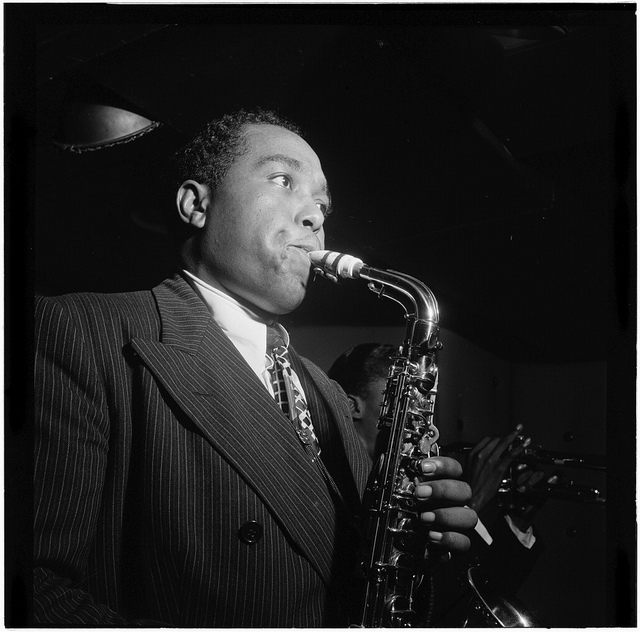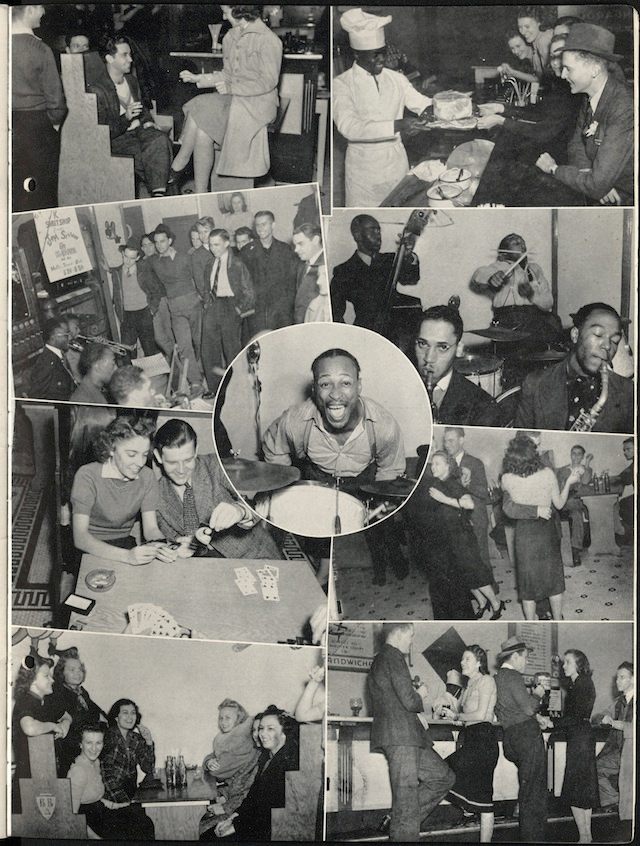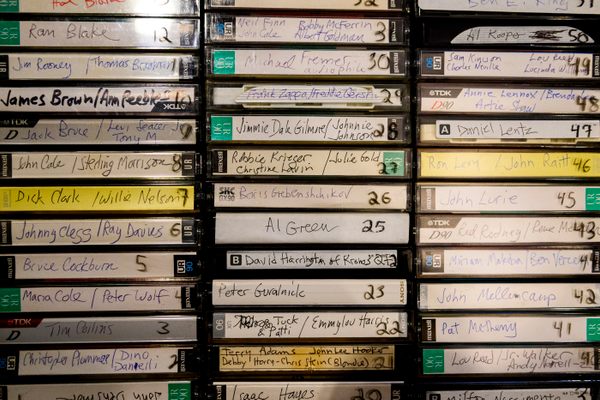This Is the Only Photo of Charlie Parker Playing His Sax in His Hometown

Charlie “Bird” Parker, playing in Kansas City. Photo from the 1939 Kangaroo UKC yearbook (Photo: University Archives, UMKC)
In the photograph of Charlie “Bird” Parker playing his saxophone in his hometown, featured above, he looks enraptured. He’s 18 and just a few months away from leaving Kansas City for good. He hasn’t been famous for long, and it’s still only locally, but people are starting to talk about how he plays that horn. He’s at an informal gig, presumably to make some extra cash—his first child was born just about 10 months before—which means playing for college kids from the University of Kansas City, who spend their nights at this jelly joint, dancing and drinking and getting up to no good.
The thing is, this isn’t just a photograph of the jazz great playing saxophone as kid. It’s the only photograph of the jazz great playing saxophone as a kid.

This photo was found serendipitously, by an archivist at the University of Missouri-Kansas City, Stuart Hinds, who started paging through a stack of old college yearbooks while he was waiting for his computer to be fixed in the spring of 2015. “He came across bunch of students, probably in October 1938, hosting a jazz session,” says Chuck Haddix, the director of the school’s sound archives and author of Bird: The Life and Music of Charlie Parker. “And he asked me, is this Bird? And I said, yeah, it’s Bird.”
When someone is as famous as Charlie Parker is, with fans as obsessive and thorough as jazz enthusiasts are supposed to be, you’d expect there to be a full accounting of Bird’s life and music, a catalogue of everything that he played, every alternative take he recorded, and collectors dedicated to finding every last artifact and bit of misplaced music. And there are a handful of obsessive “ornithologists” who have moved beyond basic Bird-watching to becoming what one of their number, John Burton, calls “Bird detectives” in search of the missing bits and pieces of Bird’s life and music.
The difficulty is that they don’t always know exactly what they’re looking for.

Charlie Parker in 1947, in New York City (Photo: William C. Gottlieb/Library of Congress)
It’s a surprisingly active search process. “The things that keep popping up are mind-boggling,” says Burton, a lawyer in California who set out, in the 1970s, to hear every last bit of Bird’s music. In 1988, for instance, the Verve music label released “The Complete Charlie Parker on Verve,” a set of ten discs that was supposed to include every bit of music that Bird had recorded for the label. Except that it didn’t—which no one knew until, this past year. “If we were talking last December, I would have said, there’s no more Verve stuff. They got it all; they put it out,” says Burton. But in May 2015, the label released a deluxe edition of “Charlie Parker with Strings,” a famous session in which Parker played with a classic string section. “All of a sudden, out of the blue, they released, like 15 alternate takes from that session,” says Burton. “I’m just staggered by that.”
There are recordings that almost no one has heard, that are known to be in the collections of private citizens, who guard them closely. But often new recordings or new photos appear out of nowhere, like the snap of Bird at the jelly joint.
One fragment that Burton uncovered was on a 78 made by Dean Benedetti, a musician whose recordings of Parker were considered one of the great “lost” troves before they were released in 1990. But this record had been separated from the rest of the collection; by the time Burton found it, someone had written “trash” on the label.
Burton couldn’t even play the record until he realized the big thick bands on both sides were recorded inside out, so that the needle started on the interior of the disc, instead of the rim. The music was nothing special, some decent jazz musicians, probably Benedetti and his buddies. But then Burton noticed a thinner band of music tucked in the record’s inner circle. “It was a Charlie Parker solo,” he said. “It’s 52 seconds”—just a tiny bit of treasure, that no one had heard for 50 years.

Charlie Parker in 1947, in New York City (Photo: William C. Gottlieb/Library of Congress)
If his artistic life keeps yielding new material, that mystery pales in comparison to his personal life. Parker died in 1955, at the young age of 34, after years of heroin abuse and alcohol. Though his music was surprisingly well documented, often recorded live on the bandstand, there’s scant evidence for what his life was like, outside the legendary stories of missed gigs, all-night parties, and the time he rode a horse into New York bar.
“He’s become a larger-than-life figure, and it’s hard to get what he was like as a man and musician,” says Haddix. “He had a tendency just to sketch songs out on the way to the studio. If you’re talking about Dizzy Gillespie or Count Basie, the arrangements survived. Bird’s music manuscripts are an obvious missing piece. He didn’t really leave behind very much, in terms of artifacts and scores and arrangements, because of his lifestyle,” Haddix says.
Evidence of his life in Kansas City and early recordings of his music are particularly scarce. That’s why this photo of him is so precious. It caught him at a moment in between, playing with a band he’d leave in a couple of months, to join another from which he’d quickly be fired and, adrift, decide to leave town, for New York City, where he’d start playing bebop, the fast, highwire style of jazz that would make him truly famous. The 1938 photo wasn’t labeled with his name, and it was part of a full-page montage of “random shots” of musicians and college students. Yet there he is, eye closed, Bird captured in the wild.

The full spread in the 1939 Kangaroo (Photo: University Archives, UMKC)













Follow us on Twitter to get the latest on the world's hidden wonders.
Like us on Facebook to get the latest on the world's hidden wonders.
Follow us on Twitter Like us on Facebook